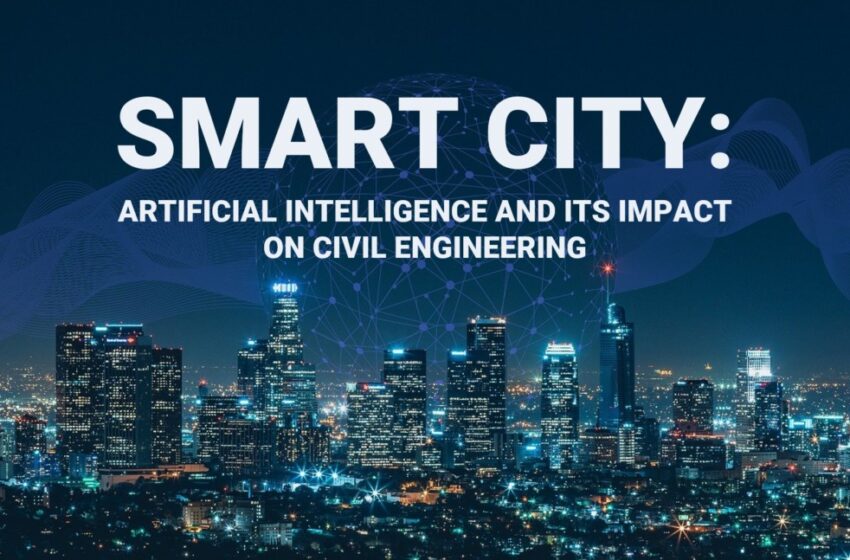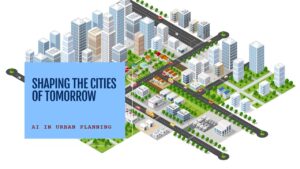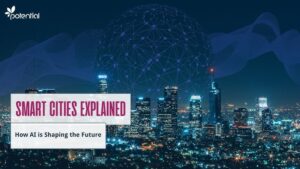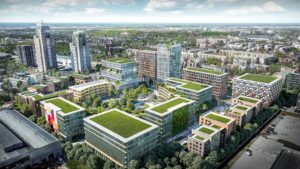Mappls : India’s Indigenous Navigation Revolution Developed by Indian Company MapmyIndia
Top 6 Smart AI Ideas for Better City Traffic

Smart AI Ideas for Better City Traffic
Smart AI Solutions: AI-Powered Urban Traffic Systems: Transforming Urban Transportation Managing traffic congestion in cities has emerged as one of the most urgent issues in an era of rapid urbanisation. Conventional traffic management systems frequently fail to optimise traffic flow, which results in longer commutes, more pollution, and irritated commuters. The AI-Controlled Urban Traffic System is a revolutionary invention that uses artificial intelligence to build safer, more intelligent, and more effective urban transportation systems.

An AI-Controlled Urban Traffic System: What Is It?
An AI-controlled urban traffic system tracks, analyses, and controls traffic flow in cities using real-time data, machine learning models, and artificial intelligence algorithms. To obtain a thorough grasp of road usage and vehicle movement, these systems combine data from multiple sources, such as sensors, traffic cameras, GPS data from cars, and mobile apps.
After processing this data, Artificial Intelligence makes smart decisions in real time, including rerouting traffic, anticipating congestion, modifying traffic signal timings, and even alerting emergency response teams.

Important attributes and capabilities
- AI-powered adaptive traffic signal control can dynamically modify traffic light cycles in response to current traffic conditions, greatly cutting down on intersection wait times and enhancing traffic flow in general.
- Predictive traffic management: AI can forecast traffic patterns and recommend the best routes to commuters by evaluating both historical and present data. This helps to avert possible congestion before it arises.
- Smart Incident Detection and Response: Using sensor inputs and surveillance footage, AI can instantly identify accidents, stalled cars, or other disruptions, allowing for automatic traffic rerouting and a quicker response from authorities.
- Connected cars, Internet of Things-enabled road signs, and public transport systems are examples of smart city infrastructure that integrates with AI systems to produce a more intelligent and coordinated traffic ecosystem.
- Environmental Monitoring and Control: By keeping an eye on emissions and air quality, AI can make decisions about traffic management that help cut pollution, like giving preference to electric buses or encouraging green wave systems.

AI’s advantages for managing traffic in cities
- Decreased Congestion: Smarter routing and better signal timings greatly reduce traffic bottlenecks.
- Reduced Emissions: Less idling and emissions result from better traffic flow.
- Enhanced Safety: The likelihood of accidents is decreased by better traffic regulation and faster incident detection.
- Cost-effectiveness: By automating traffic control, operating expenses are decreased and less human involvement is required.
- Improved Commuter Experience: Predictive travel times and real-time updates make commuting more dependable and seamless.

Examples from the Real World
Smart AI-powered traffic systems have already started to be implemented in cities like Los Angeles, Singapore, and Barcelona. Singapore’s AI-based system has effectively decreased traffic congestion during peak hours by adjusting traffic signals using sensors and predictive models. Barcelona, meanwhile, uses AI in conjunction with its smart city infrastructure to keep an eye on traffic and sustainably manage urban mobility.

Obstacles and Things to Think About
- The deployment of AI-controlled traffic systems is not without difficulties, despite its potential:
- High Implementation Costs: A substantial investment is needed to set up the infrastructure.
- Data Privacy Issues: Real-time data collection from smartphones and cars presents privacy challenges.
- Cybersecurity Risks: These systems need to be secured against online attacks because they are susceptible to hacking.
- Equity and Accessibility: It’s critical to make sure AI systems treat all neighbourhoods equally, particularly underprivileged ones.

AI’s Role in Urban Mobility
AI-controlled traffic systems are expected to become the foundation of urban mobility as cities become more intelligent and networked. The capabilities of AI traffic management will be further improved by the integration of advanced IoT devices, 5G networks, and driverless cars. These systems have the potential to make cities more livable, effective, and ecologically friendly places with continued investment and innovation.
ALSO READ THIS: Phule Movie: 2 Voices That Dispelled the Quiet


